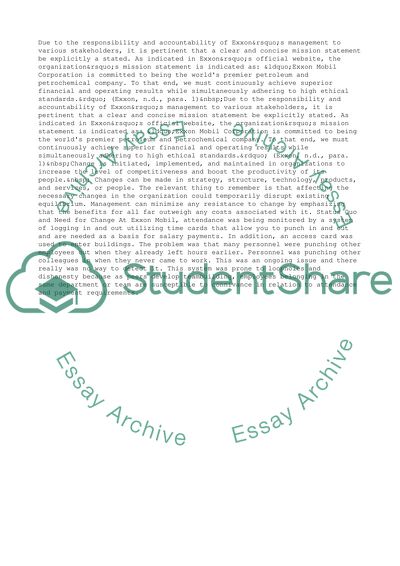Cite this document
(Management of Change: Exxon Mobil Case Study Example | Topics and Well Written Essays - 3000 words - 1, n.d.)
Management of Change: Exxon Mobil Case Study Example | Topics and Well Written Essays - 3000 words - 1. Retrieved from https://studentshare.org/business/1740239-mba-management-of-change
Management of Change: Exxon Mobil Case Study Example | Topics and Well Written Essays - 3000 words - 1. Retrieved from https://studentshare.org/business/1740239-mba-management-of-change
(Management of Change: Exxon Mobil Case Study Example | Topics and Well Written Essays - 3000 Words - 1)
Management of Change: Exxon Mobil Case Study Example | Topics and Well Written Essays - 3000 Words - 1. https://studentshare.org/business/1740239-mba-management-of-change.
Management of Change: Exxon Mobil Case Study Example | Topics and Well Written Essays - 3000 Words - 1. https://studentshare.org/business/1740239-mba-management-of-change.
“Management of Change: Exxon Mobil Case Study Example | Topics and Well Written Essays - 3000 Words - 1”, n.d. https://studentshare.org/business/1740239-mba-management-of-change.


